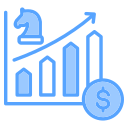Tax Efficiency That Adds Up Over Decades
Fewer sales often mean fewer taxable events. Favor long-term capital gains rates where applicable, and use tax-advantaged accounts purposefully. This patience preserves capital you would otherwise surrender, allowing compounding to work on a larger after-tax base.
Tax Efficiency That Adds Up Over Decades
Placing tax-inefficient assets in tax-sheltered accounts and tax-efficient holdings in taxable accounts improves after-tax returns. Over years, this quiet coordination compounds, creating meaningful differences without demanding constant tactical tinkering or complicated timing calls.
Tax Efficiency That Adds Up Over Decades
Within a long-term plan, tax-loss harvesting defers taxes without derailing strategy. You maintain market exposure, obey wash sale rules, and remain focused on goals. Comment if you have harvested losses before and subscribe for practical timing tips.



